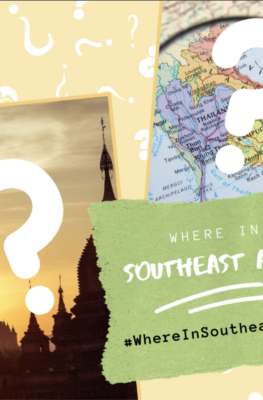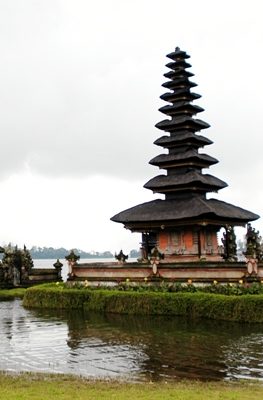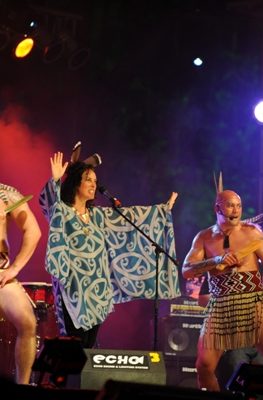Published on March 2, 2015
It goes without saying that Indonesia – the largest archipelago in the world (1.9 million square km) with over 230 million inhabitants, a host of ethnic groups and all world religions represented – has a rich variety of Festivals, both ancient and modern, religious and secular.
One article therefore can’t do justice to the full richness thereof. Instead, a selection has been made of a fewremarkable festivals taking place during the coming period of the year (March to August), so as to increase the likelihood of visiting one or more of them, fitting your holiday schedule.
For more detailed and up-to-date information on festivals the official tourism site of Indonesia is an unparalleled source that will take you to the spellbinding wonders that lie within the Indonesian archipelago (http://www.indonesia.travel).
CAP GO MEH, Singkawang, North-West Kalimantan
For instance, Chinese New Year, recently celebrated abundantly in a couple of South East Asian nations, usually isn’t immediately thought of in connection to Indonesia. It is however heartily commemorated on the 15th day of the New Year in areas of the country with large ethnic Chinese populations, where it is known as “Cap Goh Meh” (March 5, this year). Cap Go Meh celebrations have their roots in southern China, from where most Chinese Indonesians came from. In southern Chinese culture it is believed that the gods come out of the heavens on the 15th day of the year to grant wishes and spread good luck. It’s also the day of the first full moon of the new lunar year.
The most fascinating festival takes place in the tropical town of Singkawang, located 145 km north of Pontianak, in West Kalimantan. Festivities are centred on the Kridasana Stadium with performances on special stages, starting on the eve of the Chinese New Year and culminating with the Cap Go Meh finale. The peak of the festival is the parade of the ancient art of Tatung, intended to repel misfortunes for the rest of the year. During these rituals participants enter into a trance and perform many unbelievable stunts, such as stepping on swords or sticking steel wires or nails into their cheeks, and all without being wounded or scarred.
Cap Go Meh Festival; Source:http://ozip.com.au/wp-content/uploads/2013/04/PIC_CapGoMeh2-708×404.jpg
Another remarkable ancient festival will be held on ”August 1 & 2”on the Dieng Plateau, a three hour drive away from Yogyakarta or two hours from Semarang.The main feature of this “Dieng Festival”, the ceremony of shaving off the hair of dreadlock children,is truly exceptional. Dreadlock hair is widely known as Jamaica’s Rastafarian style, but in the Dieng highlands it’s not a chosen style but an inexplicable characteristic, occurring in children only.
Although born with normal hair, at an early age the hair of Dieng’s children grows to be dreadlock of its own accord. No plausible explanation for this phenomenon has been found. Local belief, however, has it that these kids are cherry picked by the ancestors to accept the dreadlocks as a gift, which are not allowed to be trimmed unless the children ask for it. Otherwise the hair will reappear.
The shaving off of the children’s hair is celebrated in traditional ceremonies known as the “Ruwatan Anak Gimbal”. It all begins with a parade of conventional Javanese horse-drawn carriages, in which the dreadlocked children are shown around the village, guarded by Royal Troops (Manggala Yudha). Various time-honoured fine art processions follow thereafter. Then the children are brought to the Arjuna Temple in the Dieng Temple complex (stemming from the 8th century) where the hair cutting rites will be undertaken. The chopped hair is deposited in the lake, symbolizing the giving back of the hair to the ancestors.
Hair cutting ceremony of the Dieng Festival; Source:http://www.thejakartapost.com/news/2014/09/01/cultural-cut.html
JAVA JAZZ FESTIVAL, Jakarta, North-West Java
Around the same time as the Cap Go Meh festival, the “Java Jazz Festival” is captivating the city of Jakarta, one of Southeast Asia’s most prominent jazz sessions. The first ever of this 4-day musical event was staged in 2005 but over time it has grown to such degree that in 2010 it was acknowledged as the biggest jazz festival in the world, whilst in 2013 it recorded the highest number of audience in attendance, attracting over 100,000aficionados.
11th Java Jazz Festival; Source: http://www.kiostix.com/tuk_kiostixevt/java-jazz-festival-2015/
Using the Jakarta International Exhibition Center in Kemayoran as its primary venue, this wide-ranging display of music and performers has in the past brought to its stages much-admired international stars. Among world’s most prominent musicians who have appeared in Java Jazz were: Stevie Wonder, Santana, Lisa Stansfield, Joss Stone, Toni Braxton, Jimmy Cliff, Herbie Hancock, Al Jarreau, Erykah Badu, Bobby McFerrin, Dave Koz, The Manhattan Transfer, Swing Out Sisters, Phil Perry, Earth Wind and Fire, Natalie Cole, Lee Ritenour, Bob James, and many more. .Likewise every year a vast number of gifted Indonesian musicians play as well. This year the festival will take place from “March 6 to 8”.
VESAK FESTIVAL, Borobudur, Central-Java
The resplendent temple of Borobudur is worth visiting anytime of year, but during the “full moon of May” (purnama sidhi) this age-oldlandmark hosts the holy “Vesak festival”, attracting thousands of Buddhist pilgrims and other travellers. Dating back to the 9th century, it is one of the most frequented sites in all of Indonesia.
Vesak Festival, Borobudur; Source:http://commonswikipedia.com
Vesak honours the three most important events in the life of the Buddha Siddharta Gautama – notably his childbirth, his illumination, and his passing away. On Vesak day the monks and the flock undertake the trip up to the Borobudur Temple, carrying the holy torch and water. The first sighting of the full moon denotes the apex of the ritual; after further evening ceremonials thousands of Puja lanterns are released into the sky, signifying enlightenment for the whole world. This festival is a lovely demonstration of devoutness, conviction, and the genuine spirit of Buddhism.
It is striking and a great expression of Indonesia’s freedom of religion that this World Heritage Site is such an important place of Buddhist worship in a predominantly Muslim society.
Upon attending Vesak, don’t miss the opportunity to also pay a visit to another famous World Heritage site of Indonesia, the Hindu “Prambanan Temple Complex”, a short 50 km hop from the Borobudur, located at the opposite side of Yogyakarta.
SEMANA SANTA, Larantuka, East Flores
Another interesting religious festival during our selected period is Christian Easter. Unique Holy Week or “Semana Santa”celebrations take place on East Flores, at Larantuka (March 30 – April 5, 2015). Having strong Portuguese colonial influences, the town is commonly known as one where Catholicism flourishes in Indonesia. For more than four centuries, this region inherited Catholicism through the role of the common people rather than through the clergy. During Holy Week, the normally quiet and tranquil town will be filled with pilgrims and congregations from many parts of Indonesia and from around the world.
Good Friday procession, Semana Santa, Larantuka;
Source:http://anareinhasistercity.blogspot.com/2012/07/melihat-kemeriahan-semana-santa-di.html
The Semana Santa starts with Shackled Wednesday (or Ash Wednesday) on the mid-Easter week, in remembrance of the betrayal of Jesus by Judas, which led to Jesus’ arrest and shackling. In the afternoon of Maundy Thursday (or Holy Thursday), devotees prepare the route for the following day’s seven km procession by planting candles along the route (called the tikam turo ritual). At the Chapel of the Virgin Mary a casket that has been sealed for one year is carefully opened and the statue of Mary is bathed and then dressed in mourning clothes (a piece of black or purple, or blue velvet coat).
The pinnacle of these celebrations is the commemoration of Christ’s suffering on Good Friday by following the stations of the Cross, known here as the “Sesta Vera”. The procession is highlighted by the ritual of carrying the body of Jesus Christ, placing Jesus at the centre of the ritual, and Mother Mary at the centre of attention as the mourning mother (Mater Dolorosa).
The Sabtu Santo (Holy or Black Saturday) and the Minggu Paskah (Easter Sunday) follow the next days, marking the end of the entire Easter week procession.
PESTA KESENIAN, Bali
It goes without saying that Bali, Indonesia’s prime tourism destination with its rich Hindu culture has a slew of festivals to be proud of.Notwithstanding, the month long “Bali Arts Festival”with its dazzling array of arts in all its forms – from music and dance, to photography, cuisine and literature, tops the list for tourists across the board.
Bali Arts Festival, Indonesia; Source: http://kminnen.blogspot.nl/2012_05_01_archive.html
Locally known as Pesta Kesenian Bali, the annual event, taking place from every second Saturday of June to the second Saturday of July, gathers locals and international visitors alike for a series of celebratory festivities.
The festival starts with a parade of performers from all districts in Bali, as well as other Indonesian provinces. Each year the festival carries a “theme” which is illustrated in the various processions, exhibitions, competitions and seminars. The daily performances and exhibitions in and around the Bali Cultural Centre, are a great way to discover more about the unique heritage of this fascinating island paradise (www.baliartsfestival.com). Which also find its expression in two more Balinese festivals within the period selected, notably the religious Hindu Nyepi or Day of Silence Festival(March 21); and the Rice Harvest Festival, around the end of June.
Lastly, when on Bali, don’t miss the opportunity to visit another impressive World Heritage Site, “The Subak”, a traditional agricultural system with ingenious rice terraces and water temples.
Indonesian Festivals, living up to the country’s slogan,
Wonderful, in every sense of the word






